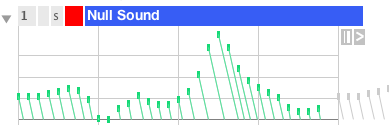
Posted
I'm a little confused about how to manipulate this parameter in the editor.
I look for a tool that will grab and drag the end of one of the green lines up or down. Can this be done?
Everything I try ends up adding a new line.
Also, I don't quite understand why the lines are in a diagonal 'back slash.' What information is this supposed to give?
Is it a representation of how long they will continue to sound in the time line compared to the onset on the x axis of the other lines/ notes?
If that is so, it seems they slant the wrong way, as it should be going forward that they contine to be engaged.
Thanks for illumination.
Prado
Wed, 2012-11-14 - 20:58 Permalink
I once made a video about quantization and length change (length change start about 2:00 min in the video):
Note: I didn't post the video at the WIKI because it contains a not absolutely correct statement. In the video I say that you have to change into the hyper edit mode to execute a length change with the length parameter. But that's not entirely true. The truth is that a length change at the hyper edit mode affects directly the length of the symbols while editing the length parameter without hyper edit mode creates a length parameter which is independent from the symbols. Difficult to explain.
Wed, 2012-11-14 - 21:28 Permalink
Juergen ...
Thank you! That was very helpful!
I see clearly that the little green wider part on the top of the green lines reflects the note onset point in the greyed out segments above ... which helps me understand that it as at the bottom of the editor that I read the line on the x-axis to see how long a note will be.
I also see that this is not an editor for individual note lengths ... but for the pattern of note lengths ... sort of like what you often see in the sequencer section of a synth parameter for volume, gate or similar.
Prado
Wed, 2012-11-14 - 21:32 Permalink
Difficult to explain.
I think I get this, too, thanks to you. Hyperedit directly affects the notes in the phrase, whereas regular edit creates a pattern whether a note is present at that point or not.
Regular edit would be more useful as a 'template' for all instruments in a phrase to change them to s consist pattern of staccato notes, for an example. The pattern would be present whether or not any particular instrument was playing a note at that point of time in the phrase.
Prado
Wed, 2012-11-14 - 21:40 Permalink
Length parameter is a polyphonic curve (multiple curves in parallel, like Velocity). Actually only the top "heads" on each beam are relevant. The "stem" going down to the bottom diagonally visualizes the actual duration of the value: It equals the distance projected on the bottom line.
Since Length values can be almost arbitarily small and large, this helps to get an idea of the actual duration on the time line. This would be hard to tell from a simple curve, because it scales dynamically to fill the whole vector area.

Wed, 2012-11-14 - 21:41 Permalink
To edit individual note lengths you can edit the text numbers. Open the instrument as a phrase and select 'extract from output'. You can edit the green lines, or the text (but that is kinda cumbersome.
Or else select figure to view the instrument notes, choose the 4th tool (symbol tool). Now when you select a note a blue box will surround that individual note, you can adjust the end by placing cursor at end, you will see a right arrow. Use that to adjust the length.
When looking at the length parameter, you can use the up/down arrows to globally effect notes. Unfortunately if its a chord it's harder to get at one particular note (like the 3rd note in chord). It would be nice if you could use the sysmbol tol in the length view to change just selected notes.
I find randomizing the lengths of individual notes in a chord, very useful, for creating more space in the arrangement for other parts (of course).



